Hopefully it will be back on soon
|
I have been having some problems with my virgin media broadband connection over the last few days and it looks like the whole thing has finally fallen over completely. This means that MB7UBP is not gating to the internet until I can fix this!
Hopefully it will be back on soon
2 Comments
New toy alert! I have recently picked up an elecraft band decoder to use with my remote station. Elecraft got the kit over to me quickly and it is now assembled and ready to go. This bit of kit means that I can use the TS-480 to switch antennas at my eventual remote QTH. Icom and Yaesu radios are better at handling the band outputs than Kenwoods so the options for the 480 are quite limited but the guys on the TS-480 yahoo group say this one works a treat. I'll give it a go and see....
One interesting thing to come out of the discussion with M0RXW was his work with the omnima embedded controller for APRS. I have blogged before about using APRS4R running on an Asus router flashed with Openwrt here at MB7UBP to reduce the cost and environmental impact of the Igate and this has been running for about 2 years now. Whilst APRS4R works many folks, including me, find it a bit clunky to use. Furthermore the Asus routers are now out of production so the aprs4r development team are looking at other hardware platforms.
In the meantime Reuben, M0RXW, has got Openwrt and APRX running on the Omnima (which with box and programming cable costs about £50 or $75). The flashing process looks a bit more involved and there is no GUI for settings, but these are both problems for me with APRS4R so I am not worried about that. How long will I be able to hold out before I splash the cash to play with one? I suspect it won’t be long….. I have been on holiday for a week, so had to turn of the MB7UBP APRS I-gate to meet the shut down terms of its licence. M3SXA provides such good coverage of North London that I am not sure it was missed too much.
I used aprs.fi to look at my track after driving home (up the M20 from the Channel Tunnel and round the M25). I was surprised to see that there were some serious problems with the paths. This was backed up when a Kent I-gate owner, M0RXW enquired on the aprsig email list to solve the problem. |he group came up with an interesting solution – it seems that Alan, G3RJI’s new bi-directional I-gate, MB7UUE, is translating local internet packets to RF. I have no problem with this (*if* it is limited to very local packets) but, Alan has a great location and a high gain antenna giving him a large RF footprint and therefore high channel occupancy. This meant that timing of packets was being disrupted as the I-gate had to wait for a free slot on the air to TX a packet queued from the internet. As we have reasonable I-gate density around the perimeter of London the overall effect was to cause my position to jump around on the map. For example Time 1; M0BPQ-9 heard by M0RXW and gated to the internet at position X. Time 1: The channel at MB7UUE is busy so the position X received via the internet packet is stored until the freq is clear Time 2: M0BPQ-9 Heard by M0RXW and at position Y and gated to the internet Time 2: Channel clears at MB7UUE and the stored packets (including M0BPQ-9’s the out of date position X) are sent to RF Time 3: The MB7UUE packets are gated back to the internet by M0RXW. The overall effect on the internet map is the M0BPQ-9 travels from X to Y and then back again! What is there to learn form this? The main issue is to set your “ignore dupes received with n seconds” setting at the correct level if you are gating Internet to RF. Perhaps this needs to be longer for Internet sourced spots than it is for ones generated on RF? Secondly, perhaps I beacon too frequently when mobile? I will revisit my smart beacon settings to look at this. This is certainly not a criticism of Alan and his efforts to get more activity back onto RF (which I applaud), but an interesting example of the pitfalls faced by this system. I am happy to report that once Alan realised what was going on the resolved the problem quickly, so well done that man. I had an interesting discussion with Frank, M0AEU about the Gilwell Park radio station this week and have been playing around trying to design a station that will be useful for the Scouts and possibly double up as a contest site in the Scout close season. The rules for the station are simple – no wires in places where the scouts can get at them! That doesn’t preclude temporary antennas for contests. I have done a screen grab of the site from Google earth and marked up some preliminary ideas. The site has changed a bit from when this image was taken and the building outlined in blue has been removed and replaced with another one that is a different shape. The radio shack will be in the new building at the spot marked with the arrow. My initial thoughts are to have the following permanent antennas:
There is a commercial tower on site, about 90ft tall marked T1. My current plan is to have an HF triband yagi, plus 6m yagi on this tower. This tower would also have a side arm with halyard supporting inverted V dipoles (160, 80 and 40m, marked in purple ends >20ft above the ground). These are oriented east-west at the moment, but I am unsure of the effect of the metal roof blow them. The side arm could also hold a V/UHF vertical. The second tower, T2, is a 40ft crank up mast with a decent sized stub mast on top. This will be the VHF mast supporting yagis for 2m and 70cm. I also have a butternut HF2V vertical antenna for 160/80/40 that could be hidden in the trees at “Bnut” to provide some low angle radiation on those bands. This should be a fairly straightforward install as I have most of the kit to do this already. The remaining markings are for temporary antennas that would be set up for contest use. The two green circles (rough scale to include radials) could be full size verticals for 40 and 80m. The yellow dashed lines are along thick hedgerows and could be used for reversible beverage antennas. The 800ft length would be to central America/Japan which makes sense, but I am not sure whether it is worth the effort to install a 400ft one running N/S. Is it worth having an Africa beverage? As you can see form the picture there doesn’t seem to be an easy option to install a North America beverage unless it runs across open land. So, play fantasy radio station with me. What would you do on this site and why? Back at home I have been using my remote rig set up with my Ft-847 for VHF+ work. Whilst is has done everything I expected of it, not having a real tuning knob at the operator end is a major drawback – it just isn’t any fun tuning with a computer interface. Whilst thinking about solutions I saw a reasonably priced Icom IC-706G for sale. I appreciate the radio doesn’t have cutting edge performance, but it is not much worse than the FT-847 . As a result I took the plunge and I have spent some time setting it up with my RRC v1 boxes. The picture below shows my two RRC boxes in the loft “shack” attached to my TS-480 for HF (right) and IC-706G (left). There have been some RF feedback problems, so I have had to attach large amounts of ferrite to sort this out! The box at the back is a Cross Country Wireless duplexer to split the VHF/UHF port to the respective amplifiers The photo below shows the operator end, on the kitchen table. It was all working very nicely too. Note the child lock on the cupboard behind the table. My son is now 14 months old and rummaging through everything he can find. He is the reason that my office/shack was turned into a nursery and the RRC adventure started!
I spent a couple of days last week at the Open University in Milton Keynes working. I am a part time member of the G0OUR radio club there and managed to sneak into the shack to play with the club’s new Elecraft K3.
First impressions for the radio were good, but I find it difficult to be objective as the radio is attached to a linear and a fantastic Optibeam 16-3 for 10/15/20 a bi-square for 40m or high (100ft) dipoles on 80 and 160. This puts all of my experience with bits of wire at home into the bin as this is a different league! Better still was that I managed to work an all time new one Brunei (V85RY) on 20m SSB. I made it through the pile up second call – unheard of from home. A couple of pics below shows the yagi (and smoking security guard) on a cloudy day with the towers for the 40/80/160 antennas in the background. I have recently been asked to take a look at a non working linear amplifier for 2m – a Tokyo Sagra 600. Being an optimist I spent quite some time on the web hoping to find a circuit diagram, but had no luck. It transpires that the amplifier’s owner did have a copy of the original manual he has finally passed this over to me. I haven’t found the fault with the amp yet – it looks like it is in the control board which is in one of the least accessible places of the whole beast but in the meantime I have scanned the manual and posted it here in case anyone else is looking for it online the future.
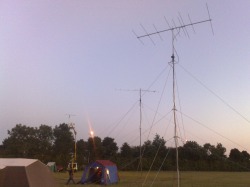 Here's a shot of all the Clifton ARS antennas at dusk, showing the 9 element interlaced 50 and 70MHz yagi in the foreground, 144MHz 9element in the middle and 15 element for 432MHz on the cherry picker at the back. 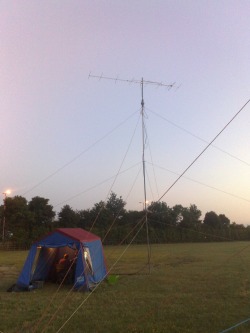 The 144MHz operating tent and 9 element DK7ZB yagi at 10m AGL. 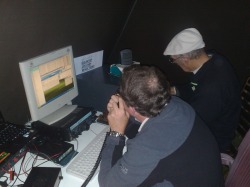 G3JKY and G4TJE in action on 50MHZ 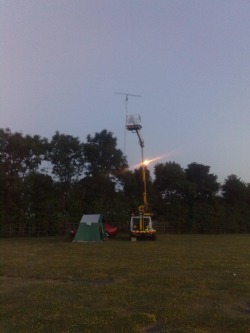 432MHZ yagi on a cherry picker. That makes life a lot easier. Must get another one for future contests! Last weekend was VHF Field day (FD) throughout most of Europe. As usual I was out with the Clifton ARS near Detling in Kent (JO01HH). I provided two stations for the contest. The 50 and 70MHz station (restricted section) was based on my heavily modified FT-847 running 100W on 6m and about 70W on 4m to a dual band yagi at 10m AGL – this station was on the air as G3JKY/p. I also provided a TS-2000, solid state amplifier and 9 element DK7ZB yagi for the 144MHz station which operated under the club call of G3GHN/p. The only technical disappointment was that the2m PA would only produce about 220W in the field where it does 325W at home – I put that down to long leads from the generator introducing voltage sag. Otherwise everything was assembled in about three hours and we were on the air no problem, which makes a change! G0GTO and G3BSN provided a very smart cherry picker and a full station for 432MHz, that they ran as G4FAA/p. I spent some time on 6 and 4m, and the conditions were fairly spotty with minor SpE openings on both days. We did better on 4m than in previous years, which means that 56 Qs was a reasonable return, but well down on the leaders who seemed to get much better Es than we did in the south east. The 6m score was down on last year as there was less DX. We weren’t that far off the leaders on that band in Q total, so our position will depend on how well we did on Es compared to our rivals. 2m was a major disappointment. With only 130 QSOs this was a terrible return. Apart from being a little under powered for the open section the gear was fine and on my visits to the station I worked OZ and EA telling me that we didn’t have any electrical faults. I think the problem is rather that the operators on 2m are more DXers than contesters so they spent a lot of time tuning the band looking for people to work rather than calling CQ. I need to work on the 2m station for next year. In contrast, Terry and Phil did a great job on 70cm working the more stations on that band than the club has for several years. Having the full legal power helps, but calling CQ for long periods of time really helped boost the score, even though the band was flat. They only ran a short yagi, so with a better antenna they could have made many more mid range contacts. No doubt I will be reflecting on this performance over the coming months and trying to come up with a solution for the next contest!
|
AuthorA few notes on recent radio activity by Steve, M0BPQ. Archives
December 2020
Categories
All
|
||||||
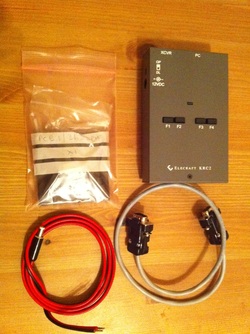
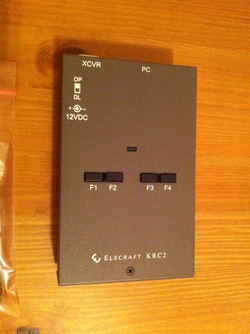
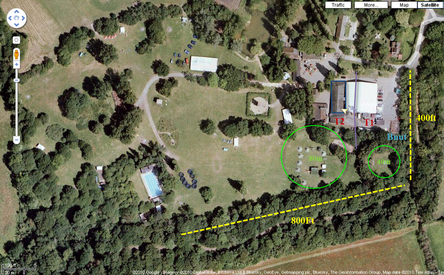
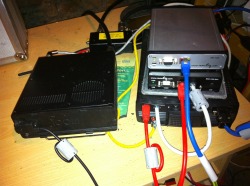
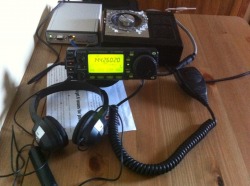
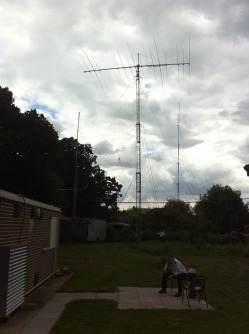
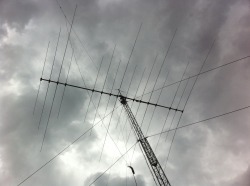
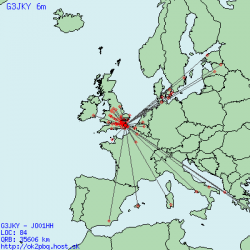
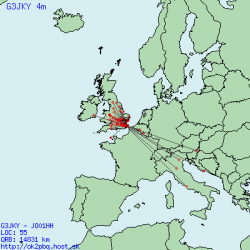
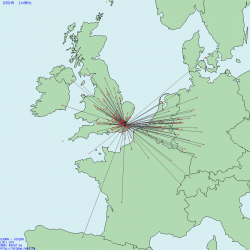
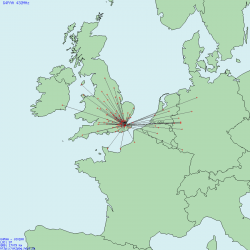
 RSS Feed
RSS Feed
